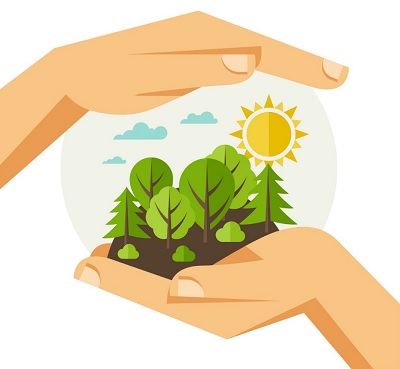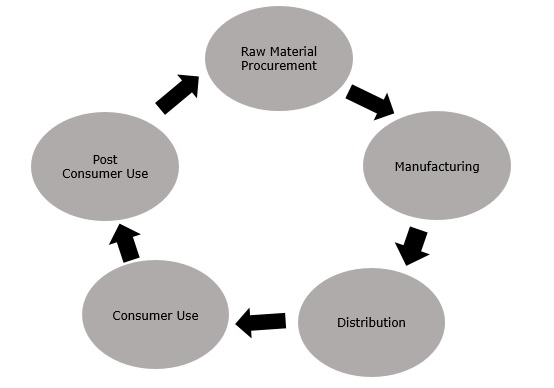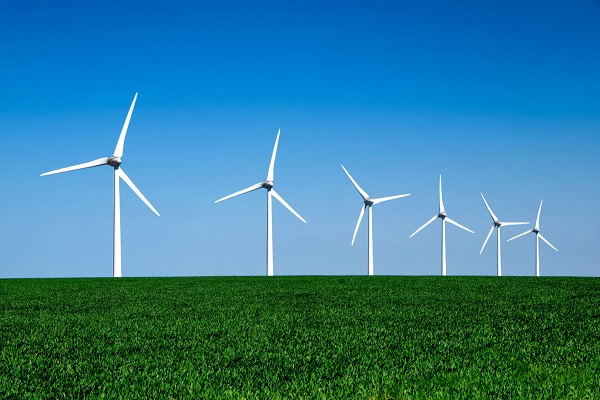
- Environmental Studies - Home
- Environment
- Ecosystem
- Classification of Ecosystem
- Functions Of Ecosystem
- Ecological Pyramid
- Energy Flow in Ecosystem
- Natural Resources
- Water Resources
- Mineral Resources
- Land Resources
- Energy Resources
- Biodiversity
- Biodiversity Hotspots
- Threats to Biodiversity
- Conversation of Biodiversity
- Pollution & Control
- Air Pollution
- Water Pollution
- Noise Pollution
- Soil Pollution
- Solid Waste Management
- Hazardous Waste Management
- Water Waste Management
- Global Environmental Problems
- Ozone Depletion
- Deforestation & Desertification
- International Protocols
- Policy & Legislation
- Air,Water & Forest Acts
- Environmental Impact Assessment
- Towards Sustainable Future
Towards Sustainable Future
According to the United Nations, "Sustainable development is the development that meets the needs of the present without compromising the ability of future generations to meet their own needs." Sustainable development requires meeting the basic needs of all and aims to provide all the opportunity to meet their aspirations to lead a better and healthy life.
Concept of Sustainable Development
Our living standards should be in tune with the limit of the worlds ecological means. However, many of us live beyond it and have scant regard for long-term sustainability. Economic growth and development is required to be in commensurate with the limits of the ecology and environment. It is required largely by the sustainable development.

Sustainable development requires setting limits in terms of population or resource use beyond which lies ecological disaster. It warns every one of us against surpassing the ultimate limits of the natural system, or else face dire consequences. It also requires that long before mankind crosses these limits, the world must ensure equitable access to the constrained resource and use technology towards it.
Economic growth and development obviously involve changes in the physical ecosystem. However, it should not cross the limits of regeneration and natural growth. For instance, renewable resources such as forests and fish stocks need not be depleted provided the rate of use is within the limits of regeneration and natural growth.
Sustainable development requires that the rate of depletion of non-renewable resources should foreclose as few future options as possible. It requires flourishing biodiversity and,hence, it vouches for the conservation of plant and animal species. It also vouches for a type of development where the adverse impacts on the quality of air, water, and other natural elements are minimized so as to sustain the ecosystems overall integrity.
Sustainable development is a wholesome process of change in which the use of resources, investment, the orientation of technological development and institutional changes are all in harmony with and enhance both the current and future potential to meet human needs and aspirations.
17 New UN Development Goals for 2030
End poverty in all its forms everywhere
End hunger, achieve food security and improved nutrition, and promote sustainable agriculture
Ensure healthy lives and promote well-being for all at all ages
Ensure inclusive and equitable quality education and promote lifelong learning opportunities for all
Achieve gender equality and empower all women and girls
Ensure availability and sustainable management of water and sanitation for all
Ensure access to affordable, reliable, sustainable and modern energy for all
Promote inclusive and sustainable economic growth, full and productive employment, and decent work for all
Build resilient infrastructure, promote inclusive and sustainable industrialization, and foster innovation
Reduce inequality within and among countries
Make cities and human settlements inclusive, safe, resilient, and sustainable
Ensure sustainable consumption and production patterns
Take urgent action to combat climate change and its impact
Conserve and sustainably use the oceans, seas, and marine resources for sustainable development
Protect, restore, and promote sustainable use of terrestrial ecosystems, sustainably manage forests, combat desertification, halt and reverse land degradation, and halt biodiversity loss
Promote peaceful and inclusive societies for sustainable development, provide access to justice for all and build effective, accountable, and inclusive institutions at all levels
Strengthen the means of implementation and revitalize the global partnership for sustainable development
The new goals replace the eight Millennium Development Goals adopted at a Summit in 2000, which expired at the end of 2015.
Environmental Education
Environmental education is a multi-disciplinary field integrating disciplines such as biology, chemistry, physics, ecology, earth science, atmospheric science, mathematics, and geography.
Environmental Education (EE) aims at increasing the consciousness and knowledge about the various aspects of environment and also about the major environmental problems facing the world today. It also spreads awareness among the masses with special emphasis on educators, voluntary works, youth and women with a view to promote conservation of nature and its resources.
It develops and makes room for implementation of innovative, region-specific educational programs and materials for conservation education and sensitizes children on environment. It includes all efforts to make general public aware of the knowledge of the environmental challenges through media and print materials.
UNESCO (United Nation Educational, Scientific, and Cultural Organization) emphasizes the role of EE in safeguarding future global developments of societal quality of life (QOL), through the protection of the environment, eradication of poverty, minimization of inequalities, and insurance of sustainable development.
Today, environmental education has become one of the most popular academic study world-over. There are special institutions coming up in the world to impart higher degrees on environmental education.
Life Cycle Assessment
Life Cycle Assessment (LCA) is a tool used to assess the potential environmental impact of product systems or services at all stages in their life cycles, i.e. from the extraction of raw materials, manufacturing or processing, storage, distribution, use and its disposal or recycling.
In other words, LCA is a technique for assessing the potential environmental and other aspects associated with a product or a service by various methods such as −
Compilation of an inventory of inputs and outputs
Evaluation of potential environmental impact relating to those inputs and outputs
Interpretation of the results of the evaluation
LCA is, therefore, a cradle-to-grave assessment of production system and their likely environmental impacts. It has come up as a valuable decision-support tool for both policy makers and industry in assessing from origin-to-end impact of a product or process.
LCA methodology has been developed extensively during the last decade. Moreover, a number of LCA related standards (ISO 14040-14043) and technical reports have been published within the International Organization for Standardization (ISO) to streamline the methodology.
Following is the representation of the LCA process.

The overall objective of LCA is to identify changes, at every stage of the life cycle of a product or process that can be helpful to the environment and prove to be cost effective.
Low Carbon Lifestyle
Carbon dioxide (CO2) is a vital constituent in the Earths atmosphere. It is a major greenhouse gas and plays a vital role in regulating the Earths surface temperature. Carbon dioxide is an integral part of the carbon cycle, which is a biogeochemical cycle in which carbon is exchanged between the earth's oceans, soil, rocks, and the biosphere.
Carbon content in dry air is around 0.01 percent. When such percentage is increased largely by anthropogenic or man-made activities, the air gets polluted. CO2 is one the prominent greenhouse gases that has been adding to the severity of atmospheric pollution and global warming in recent times.
Human activities such as increasing automobile population, industries, and consumption of electricity, etc. emit great amount of carbon into the atmosphere. For mankinds extensive dependence on natural resources and its mindless exploitation, has been slowly but steadily withering the green cover from the earth.
Carbon footprint is the amount of carbon dioxide released into the atmosphere as a result of the activities of a particular individual, organization, or community. At an individual level, these greenhouse gases are generated through transport, production and consumption of food, fuels, manufactured goods and other services.

Steps to Maintain Low Carbon Lifestyle
De-carbon Life − Switching to a lifestyle which has the least possible impact on the environment, generates the smallest carbon footprint. Everything an individual, organization, business or government does or uses embodies some form of carbon. These should be chosen based on the least amount of impact they will have on the climate and the environment.
Get Energy Efficient − Improving the efficiency of your buildings, computers, cars, and products is the fastest and most lucrative way to save money, energy and carbon emissions. High performance, environmentally accountable, energy efficient and productive facilities are now economically possible. For instance, use of LED bulbs in place of incandescent bulbs is a case in point.
Switch to Low Carbon Energy − We should make an effort to get energy from renewable sources such as solar or wind energy. Shifting from conventional sources to nonconventional energy sources to the best extent possible will have a visible impact on the environment. Today, more than 50 per cent of all US consumers, for example, have an option to purchase some type of green power product.
Switch to Low Carbon Products and Services − The market for climate-friendly products and services is growing rapidly, from energy-efficient products to new renewable energy systems. Eco-Design is an important strategy for small and medium sized companies both in developed and developing countries to improve the environmental performance of their products, reduce waste, and improve their competitive position in the market.
-
Buy Green and Sell Green − Today, there is a growing number of consumers willing to buy green products, if given the choice.
To realize or make incessant efforts to achieve a sustainable world lies in the hands of man. Mankind, if desires, can deactivate the destructive processes that have so crippled the natural environment through dedicated and well-planned actions and initiatives. Failure to do so endangers civilization and paves the way for mass suffering, conflicts, and multiple collapses all around us.